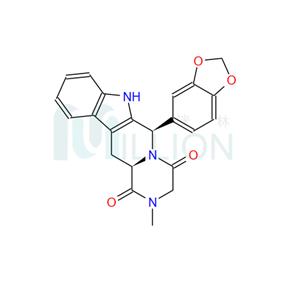Chemistry: Tadalafil is an annulated 2,5-diketopiperazine.It is also a 1,2,3,4-tetrahydro-β-carboline.Tadalafil can be synthesized starting from (D)-tryptophan methyl ester and piperonal via a Pictet–Spengler reaction. This is followed by condensations with chloroacetyl chloride and methylamine to complete the diketopiperazine ring.
Medical uses: Tadalafil is used to treat erectile dysfunction, benign prostatic hyperplasia, and pulmonary arterial hypertension.In the US, tadalafil (as Cialis) is indicated for the treatment of erectile dysfunction and the signs and symptoms of benign prostatic hyperplasia; and (as Adcirca) for the treatment of pulmonary arterial hypertension to improve exercise ability.
Mechanism of action: Penile erection during sexual stimulation is caused by increased penile blood flow resulting from the relaxation of penile arteries and the smooth muscle of the corpus cavernosum. This response is mediated by the release of nitric oxide (NO) from nerve terminals and endothelial cells, which stimulates the synthesis of cyclic guanosine monophosphate (more commonly known as cyclic GMP or cGMP) in smooth muscle cells.cGMP relaxes smooth muscle and increases blood flow to the corpus cavernosum.The inhibition of phosphodiesterase type 5 (PDE5) enhances erectile function by increasing the amount of cGMP. Tadalafil (and sildenafil and vardenafil) inhibits PDE5. However, because sexual stimulation is required to initiate the local penile release of nitric oxide, tadalafil's inhibition of PDE5 will have no effect without sexual stimulation.

 China
China



